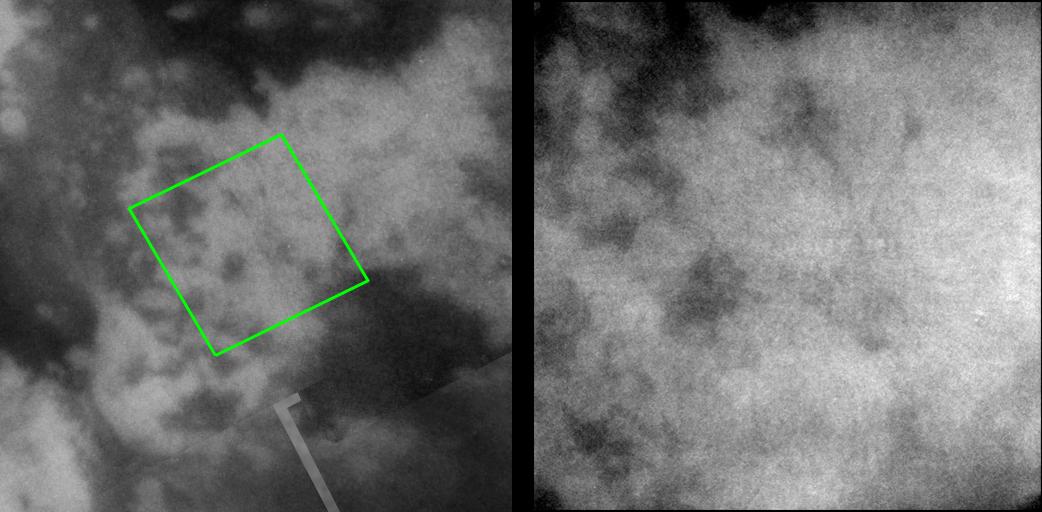Jumbled Terrain

| PIA Number | PIA06231 |
|---|---|
| Language |
|
High-resolution images taken during Cassini's close encounter with Titan on April 16, 2005,
provide still more examples of the complicated relationships between the dark and bright
materials on Titan's surface.
During the two most recent flybys of Titan, on March 31 and April 16, Cassini captured a
number of images of the hemisphere of Titan that faces Saturn. The image at the left is taken
from a mosaic of images obtained in March (see Titan Mosaic - East of Xanadu) and shows the location of the view
at the right.
The image at the right, taken during the most recent Titan flyby, shows a complex pattern of
small, 40-kilometer-wide (25-mile), dark features within a brighter area. Similar to PIA06232,
several narrow, dark and curvilinear features can be seen that may hint of dark channels within
the bright material. Cassini's synthetic aperture radar experiment also observed this region in
February, and the visual infrared mapping spectrometer experiment observed along with the
imaging science subsystem cameras in April. Comparisons of these data sets will be important in
understanding the geologic history of this complex region.
The view at the left consists of five images that have been added together and enhanced to bring
out surface detail and to reduce noise, although some camera artifacts remain.
These images were taken with the Cassini spacecraft narrow-angle camera using a filter sensitive
to wavelengths of infrared light centered at 938 nanometers -- considered to be the imaging
science subsystem's best spectral filter for observing the surface of Titan. This view was acquired
from a distance of 36,000 kilometers (22,400 miles). The pixel scale of this image is 430 meters
(0.3 miles) per pixel, although the actual resolution is likely to be several times larger.
The Cassini-Huygens mission is a cooperative project of NASA, the European Space Agency
and the Italian Space Agency. The Jet Propulsion Laboratory, a division of the California
Institute of Technology in Pasadena, manages the mission for NASA's Science Mission
Directorate, Washington, D.C. The Cassini orbiter and its two onboard cameras were designed,
developed and assembled at JPL. The imaging team is based at the Space Science Institute,
Boulder, Colo.
For more information about the Cassini-Huygens mission visit http://saturn.jpl.nasa.gov . For
additional images visit the Cassini imaging team homepage http://ciclops.org .
Credit: NASA/JPL/Space Science Institute
